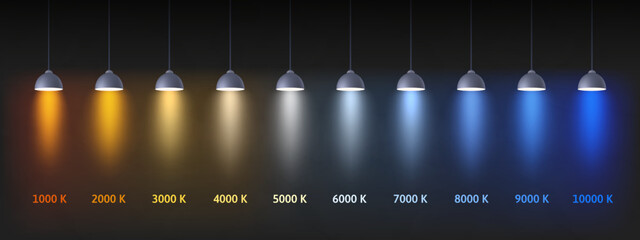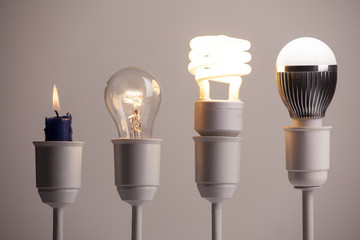The Importance of Lamps & Lighting in Modern SpacesMar 19, 2025|Read time:4min
Lamps and lighting play a crucial role in our daily lives, influencing not only the aesthetics of our spaces but also our mood, productivity, and overall well-being. As we progress into the year, the significance of effective lighting solutions continues to grow, driven by advancements in technology and a deeper understanding of how light affects our environment. In this blog, we will explore the different types of lamps and lighting options available today, their benefits, and tips for choosing the right lighting for your needs.
Types of Lamps and Lighting Solutions
- Incandescent Lamps
Description: Traditional incandescent bulbs are known for their warm glow and ability to render colors accurately. They are widely used in homes and businesses.
Pros: Affordable, easy to find, and provide excellent color rendering.
Cons: Less energy-efficient compared to modern alternatives and have a shorter lifespan.
- LED Lighting
Description: Light Emitting Diodes (LEDs) have revolutionized the lighting industry with their energy efficiency and longevity.
Pros: Consume up to 80% less energy than incandescent bulbs, last up to 25 times longer, and are available in various colors and styles.
Cons: Higher initial cost, though savings on energy bills often offset this over time.
- Fluorescent Lamps
Description: Commonly used in commercial settings, fluorescent lamps provide bright, white light.
Pros: Energy-efficient and longer-lasting than incandescent bulbs.
Cons: Can flicker or buzz, and some types contain mercury, requiring careful disposal.
- Halogen Lamps
Description: A type of incandescent lamp that uses halogen gas to increase brightness.
Pros: Provide a bright, white light and have a longer lifespan than traditional incandescent bulbs.
Cons: Can get very hot and are less energy-efficient than LEDs.
- Smart Lighting
Description: Smart bulbs can be controlled via smartphone apps or voice assistants, allowing for customizable lighting experiences.
Pros: Offer convenience through remote control, scheduling, and dimming options. Some can change colors based on mood or time of day.
Cons: Require a stable Wi-Fi connection and may be more expensive than traditional bulbs.
Benefits of Proper Lighting
-
Enhances Mood and Productivity: Proper lighting can significantly affect mood. Bright, natural-like light can boost energy levels and concentration, making it ideal for workspaces.
-
Improves Safety: Adequate lighting is essential for safety in both indoor and outdoor environments. Well-lit areas reduce the risk of accidents and deter crime.
-
Aesthetic Appeal: Thoughtful lighting design can enhance the beauty of a space. Layering different types of lighting (ambient, task, accent) creates depth and interest in interior design.
-
Energy Efficiency: Investing in energy-efficient lighting solutions reduces electricity consumption, leading to lower utility bills and a smaller carbon footprint.
Tips for Choosing the Right Lighting
-
Consider the Purpose of the Space:
-
Determine how the space will be used (e.g., reading, cooking, entertaining) to choose appropriate lighting types.
-
-
Layer Your Lighting:
-
Use a combination of ambient (general), task (specific activities), and accent (highlighting features) lighting to create a balanced environment.
-
Select the Right Color Temperature:

-
-
Choose warmer tones (2700K-3000K) for cozy spaces like living rooms and cooler tones (4000K-5000K) for workspaces to enhance focus.
-
-
Incorporate Dimmers:
-
Installing dimmer switches allows you to adjust brightness levels according to mood or time of day.
-
-
Stay Updated with Trends:
-
Keep an eye on current trends in lighting design to incorporate stylish fixtures that complement your décor.
-
Conclusion
As we embrace 2025, the importance of lamps and lighting continues to evolve alongside technological advancements. Whether you’re looking to enhance your home’s ambiance or improve productivity in a workspace, understanding the various types of lighting options available will help you make informed decisions that align with your needs. By investing in quality lighting solutions, you can create spaces that are not only functional but also inviting and aesthetically pleasing.
DISCLAIMER:
The information provided in this blog post is intended for general informational purposes only and should not be construed as professional advice. While we strive to provide accurate and up-to-date information, we make no representations or warranties of any kind, express or implied, about the completeness, accuracy, reliability, suitability, or availability of the content contained herein. Any reliance you place on the information presented in this blog post is strictly at your own risk. We disclaim any liability for any loss or damage, including without limitation, indirect or consequential loss or damage, or any loss or damage whatsoever arising from reliance on information contained in this blog post. We encourage readers to verify the accuracy and relevance of any information presented here with other sources and seek professional advice or guidance where appropriate. Links to third-party websites or resources provided in this blog post are for convenience only and do not imply endorsement or approval of the content, products, services, or opinions expressed on those websites. We have no control over the nature, content, and availability of those sites and assume no responsibility for their accuracy, legality, or decency. We reserve the right to modify, update, or remove any content in this blog post at any time without prior notice. By accessing and using this blog post, you acknowledge and agree to these terms and conditions. If you do not agree with these terms, please refrain from accessing or using the information provided herein.
